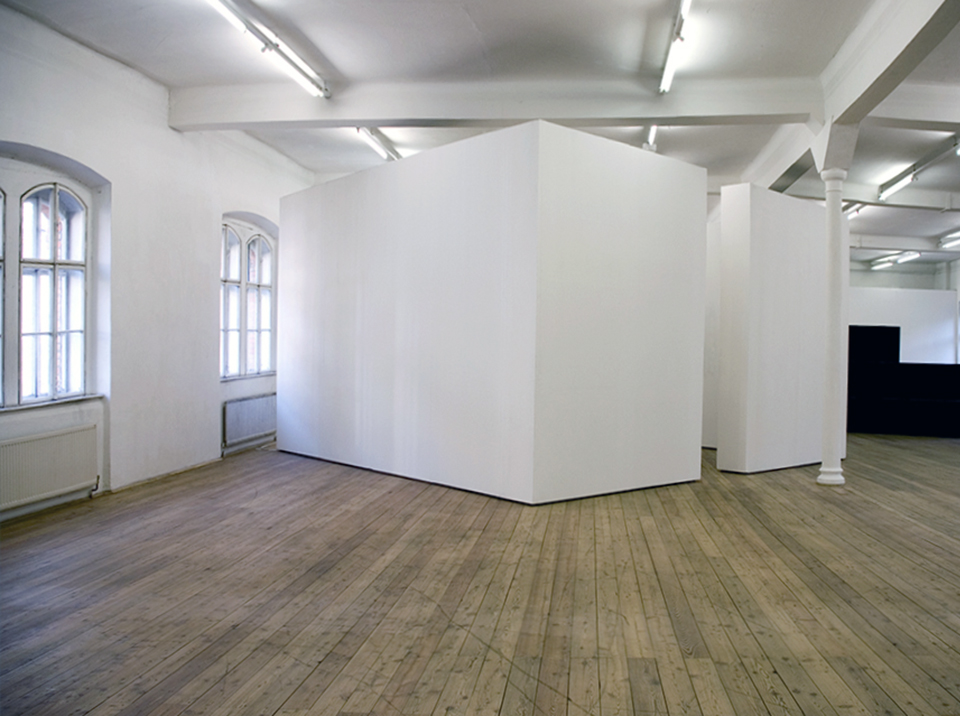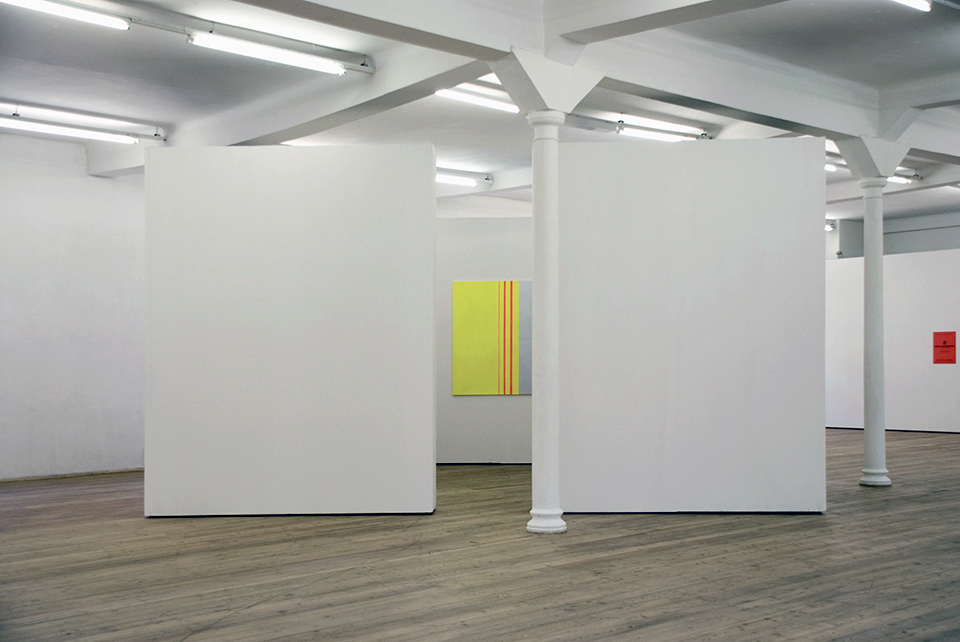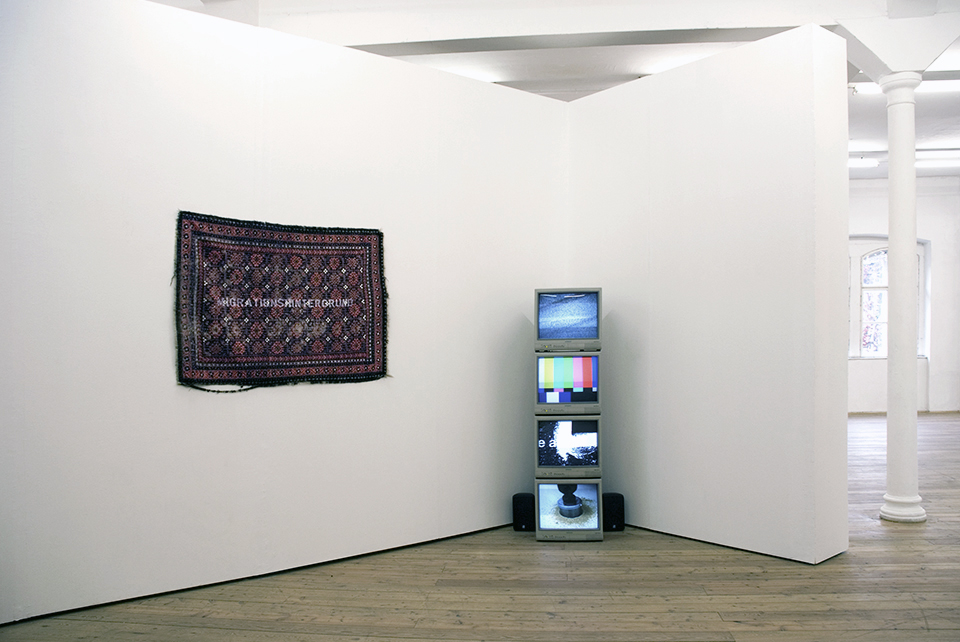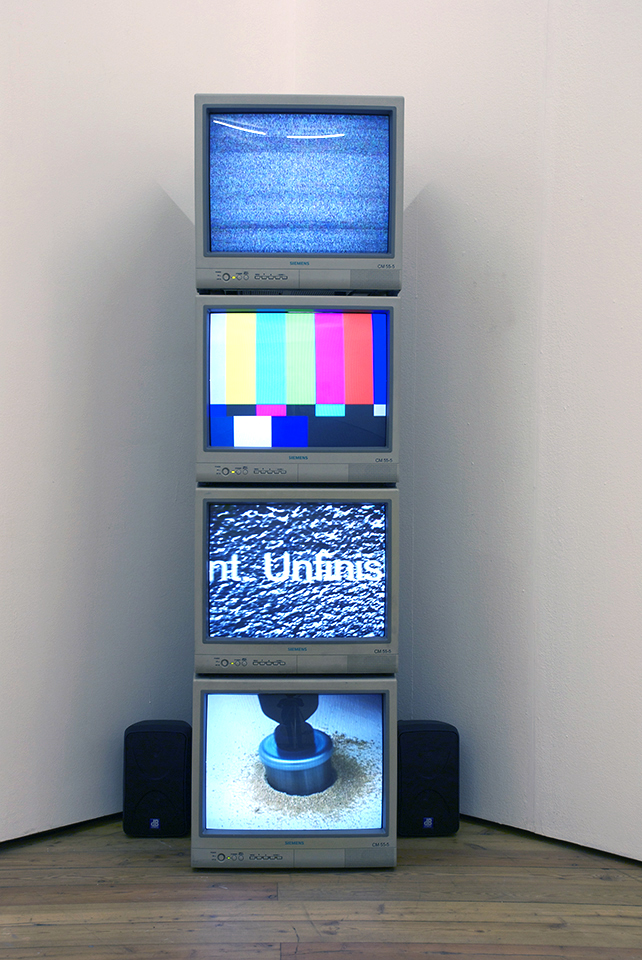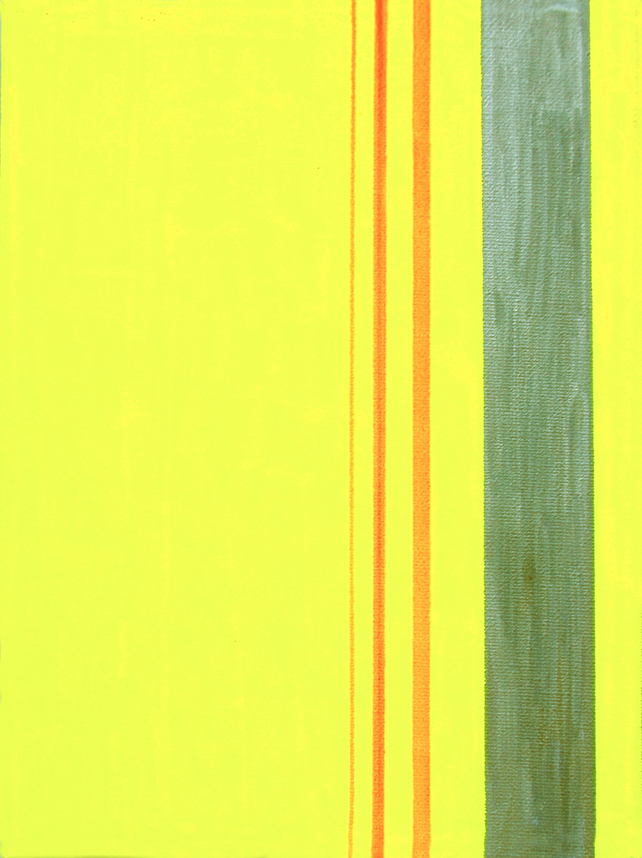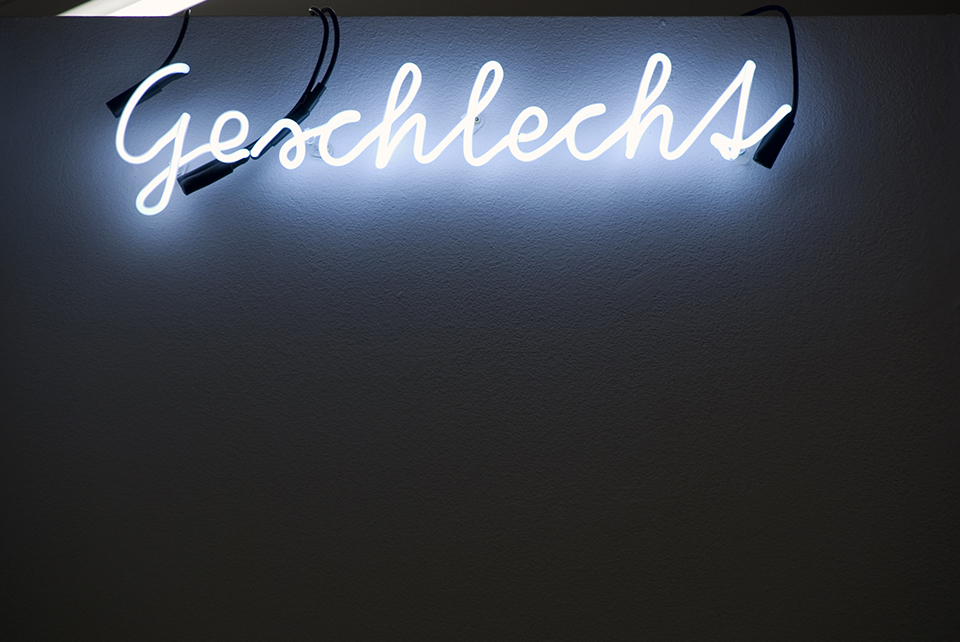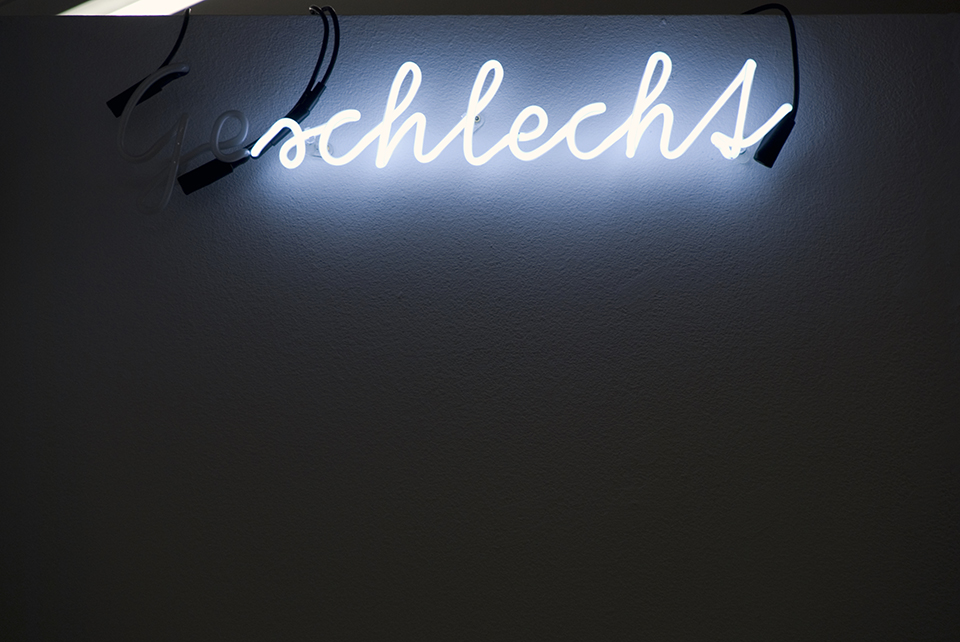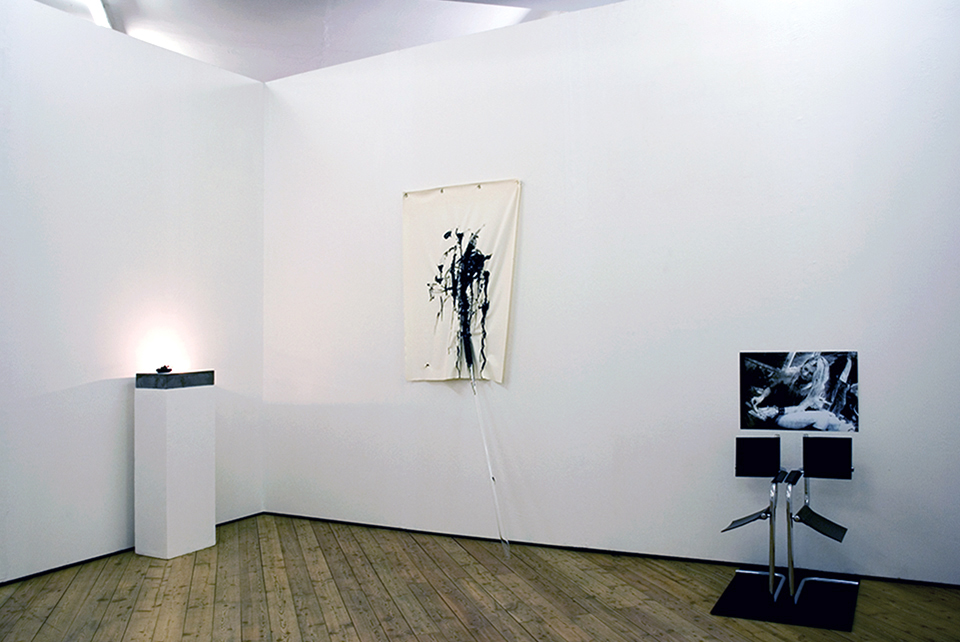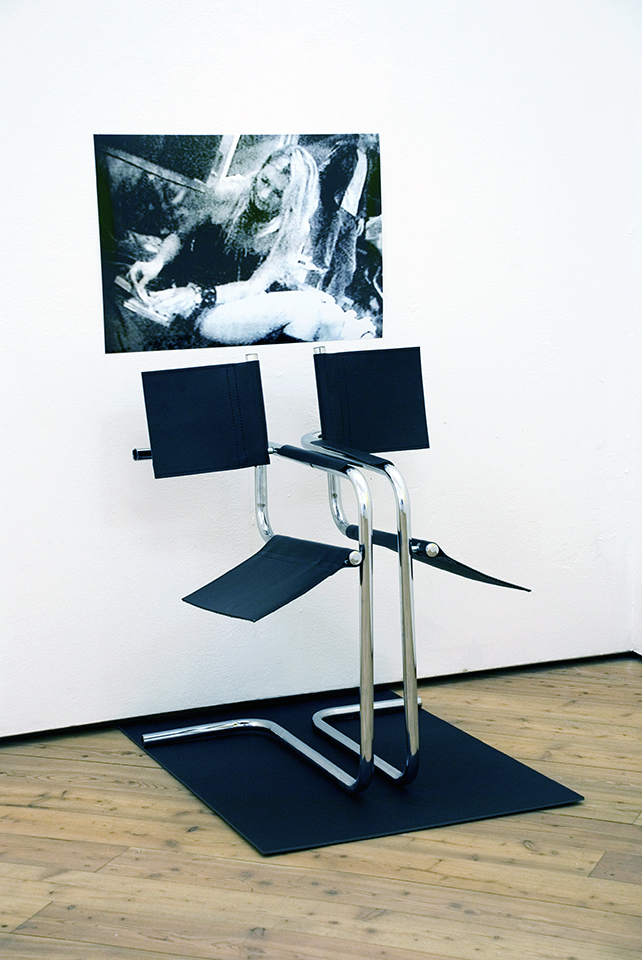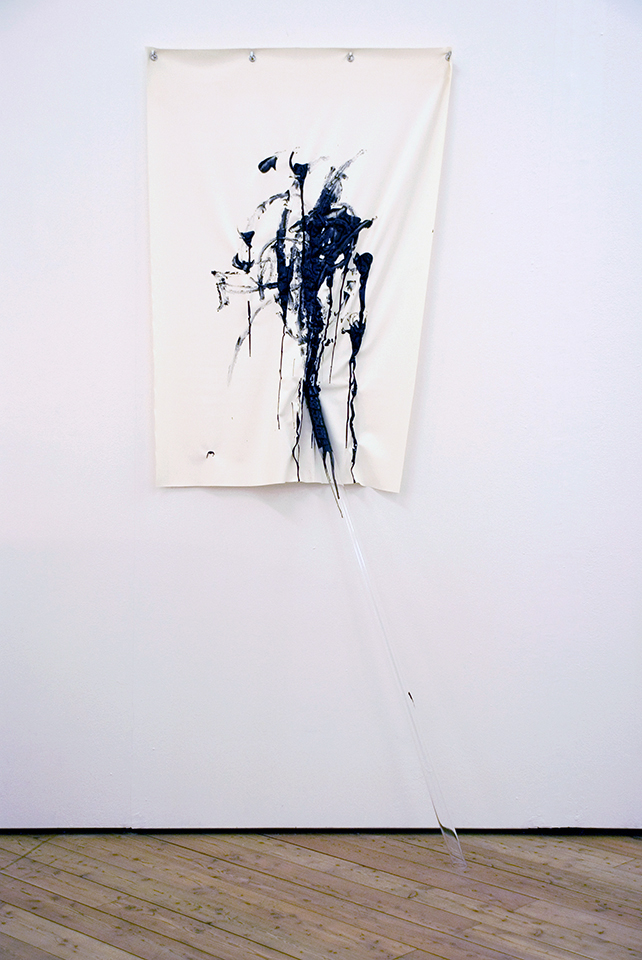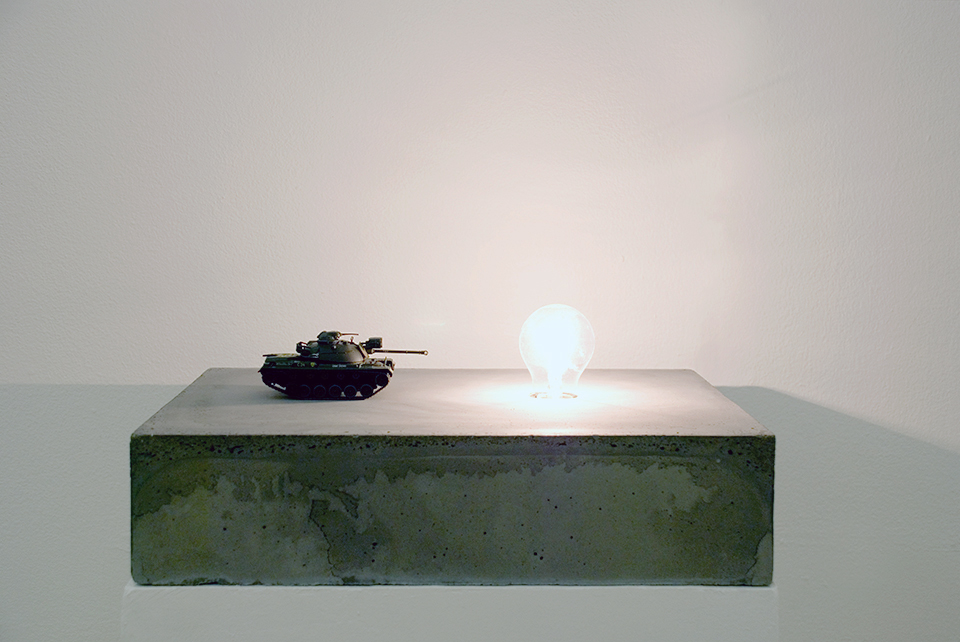THE NBDBKP COLLECTION
As our contribution to the exhibition PSEUDOPARADIGMATIKA at Kunsthalle Exnergasse in Vienna we have selected works by seven young internationally-based artists from our private art collection, which we consider a component of our extended art practice.
The contributions were selected based on conceptual affinities and relevance in terms of a critical analysis of contemporaneity. The works are installed in a separate room, conceived as an exhibition within the exhibition. This simultaneous act of exclusion/seclusion and of appropriation of other artists’ works sets a counterpoint to PSEUDOPARADIGMATIKA: the presentation of the NBDBKP Collection in this context is to be read as a critique of the idea of the artwork as ornament and of the artist as a consumer, through an over-affirmation that simultaneously reinforces and questions these assumptions. However, the decision to display works from our collection within an exhibition as an independent statement is to be understood also as a reaction to the power relations generated by the circumstance itself of being invited to contribute and, in a broader sense, as a commentary on the role of the market in the production and perception of contemporary art today.
It is our intention to offer irritation rather than clarification and to raise a variety of possible questions: What kind of relationship exists, for example, between the collected artists and the collector artists and what is the difference—if there is one—between appropriation, use of found material and this display of ownership in terms of an artistic strategy? To which degree are the works being co-opted by the collector artists? What individual relevance do these single statements still maintain while being used as material for an installation and what becomes of the artists’ identities and of the motivations behind their pieces in the process? Moreover, does the conventional presentation of the different works within an isolated white cube actually increase the readability of the installation itself or is this neutrality rather deceiving, intentionally obliterating even more the “hallmark” of the collector artists through a style mimicry?
The works selected for this first public presentation of the NBDBKP Collection offer different clues in regard to these and other questions, whereby the superordinate configuration of the installation remains conceptually dominant. Nevertheless, after accessing the separate room created for the collection within PSEUDOPARADIGMATIKA, the “exterior” as well as the concept behind the installation itself are somehow bracketed out, allowing the focus to fall on the single works.
Zosa Gavin’s approach is absolutely contemporary, precisely because it is built purely on references, fluctuating between nihilist spirit and meditative concentration on form. Although aware of the aleatory nature of her re-combinations, she enjoys the game to the fullest, her imagery ranging from Bauhaus to Bowie, from minimalist sculpture to Kate Moss.
Manrico Lai—a self-declared manic-depressive and pessimist—seems to represent the antipole to Gavin’s joyful all-encompassing practice. From his reclusive studio on Pantelleria, a small island of the Mediterranean located halfway between Sicily and North Africa, he occasionally sends out messages to the world as sharply political as absolutely focused on the now, with a dark sense of humour and a disposition for corrosive gestures towards an art world obsessed with political correctness.
Hugo Alejandro Perez considers himself more a philosopher than an artist, although acknowledging to art the function of an illustration of thought constructs. Sharing with Lai a fairly gloomy vision of the world, he works with scale models, which serve as food for thought rather than as messages to an audience. In fact, the message is that there is no message to convey beside the awareness of the impossibility to decipher the ambiguity of existence and the complexity of the world.
Ralitsa Schorlemmer’s take on a tradition of feminist art is irreverent, but needs to be read in part as homage to some of her heroines—female artists as diverse as Valie Export, Eva Hesse, Carolee Schneemann and Louise Bourgeois. Her work is an example of an attitude that combines both acceptance and refusal of the history of political art, with a consciousness for a condition of “identitary homelessness”, as she describes it in her own words. Considering the modalities of the investigation of gender in art mostly reactionary, she uses provocative word games to counter, “a hypocritical consternation” she considers politically ineffective. “After all I’m a tomboy, I like guy jokes”, she states.
Also the practice of the Norwegian artist collective UnDefinedBroadCast is centred on a concern with the political potential of art, alongside a consciousness of the impossibility of achieving a truly communal statement. The works by the members of the collective are often chaotic and heterogeneous, organically in progress and deliberately unfinished. The aim is that of ideally making each member of the audience become part of the collective, extending it unrestrictedly and causing any content to dissolve to the point of disappearance.
South African artist Jonas van de Merwe goes even further by denying any possibility of the political in art, literally “dismembering meaning” in an attack on the exploitation of issues of race and ethnicity and the trivialisation of postcolonial theory, African-American and African Studies in contemporary art. He plays the part of the wise fool, stating that “ignorance really is bliss” and willingly perpetuating stereotypes in order to unmask them, creating a stridently poppy and uncanny mix of high and low art to form a monstrous hybrid—a distorting mirror of the international art scene and ultimately of the society of late capitalism.
Finally, James I. White’s paintings offer visionary scenarios that in their abstraction incorporate biographical elements: the Fata Morgana of the verticality of downtown Dallas—as opposed to the dullness of the suburbs he was born and raised in, or to the horizontality of the Texan desert landscape—the fluorescent hues of the British acid house and rave scene of the early nineties or the gritty urbanity of graffitied walls. The Glasgow-based artist is a painter who does not believe in painting and speaks of his works as “psychological architectures”, able to influence and modify the surrounding space.
Concept text for the exhibition booklet
PSEUDOPARADIGMATIKA – Every step is a step on the stage
Kunsthalle Exnergasse, Vienna
November 2011
